Removing Haze from an Image: DxO OpticsPro with ClearView vs. Aperture, Capture One and Lightroom
The standout feature of the recent release of DxO OpticsPro 10 is its new DxO ClearView tool for removing haze in images. The description from DxO Labs regarding this new tool is as follows:
The new exclusive DxO ClearView feature automatically eliminates the heat haze visible in landscape photos, as well as smog in urban photos. No more need to manually apply a mask to your image or to manipulate multiple sliders: DxO ClearView closely analyzes the color components of the image and focuses on a local black. In just one click, the contrast is visibly improved.
Looking at the example before and after images on the DxO OpticsPro website suggests the tool can provide some impressive results.
In January this year I was on the North Atlantic coast of France at La Baule, a seaside resort. I was there for a conference and as usual I took some photos, this time with a fairly old walkabout lens, a first-generation Nikon 18-200 VR. It was early morning and there was a lot of haze following below-zero temperatures overnight. The images I took needed some corrective work and I immediately thought this would be a good opportunity to test DxO ClearView.
Thus I ran one of my hazy images through DxO OpticsPro 10 and its new DxO ClearView tool to see what result I would get. Following that I did a comparison by trying to achieve the best anti-haze results I could with each of each of Aperture v3.6, Lightroom v5.7 and Capture One Pro v8.2. These are my results.
The starting point
To show the starting point, below is the image directly after import in Aperture, as this does the least automatic correction of the applications. It's pretty hazy, and includes one big sensor or water spot that I remove in some of the subsequent images. I used a 150mm focal length as I couldn’t risk getting too near the gulls, f/13 for good depth of field and ISO 800 to push the shutter speed to 1/1250 to freeze any flying birds.
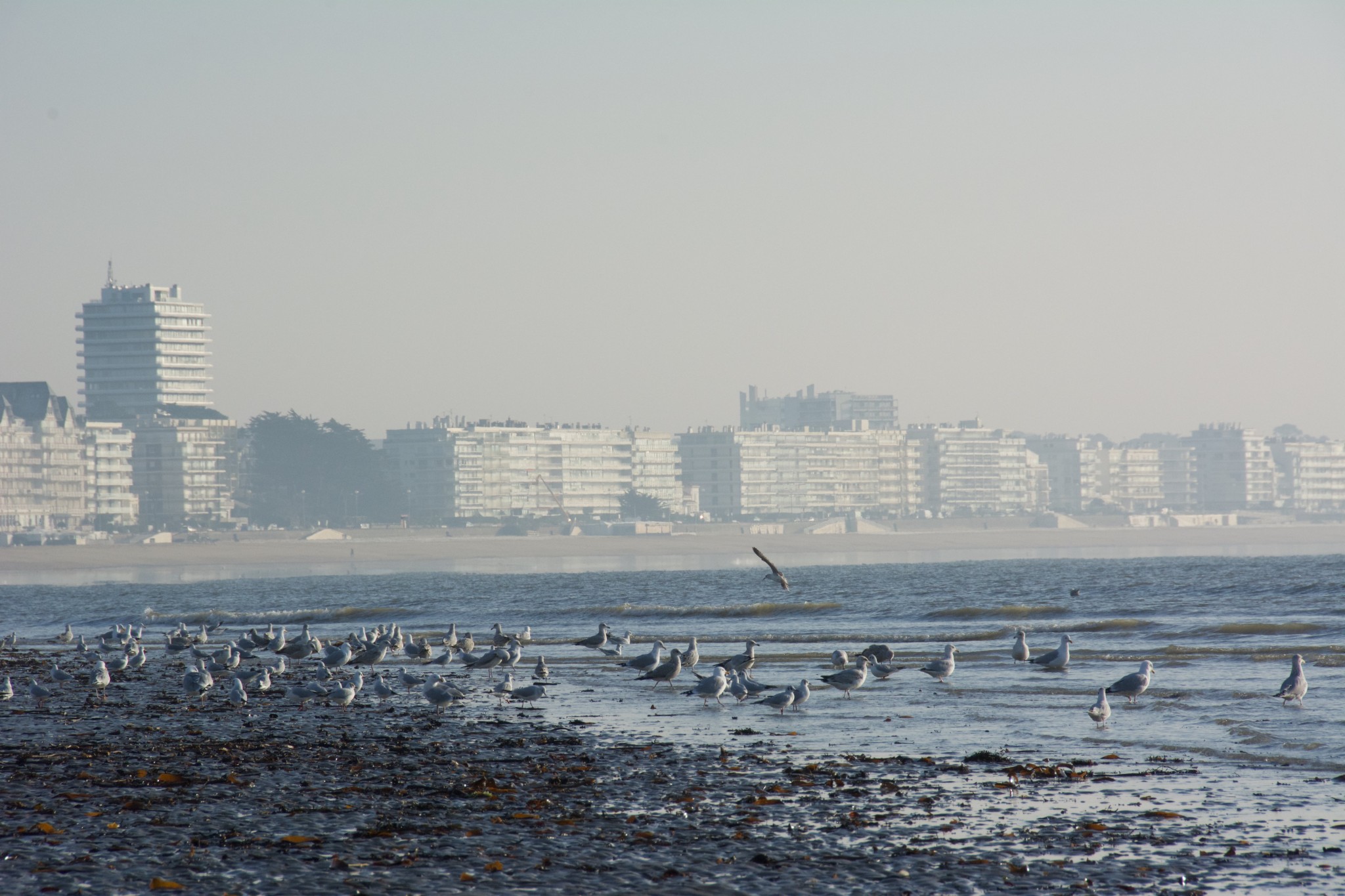 A hazy beach shot of La Baule - imported into Aperture
A hazy beach shot of La Baule - imported into Aperture
DxO OpticsPro 10 with DxO ClearView
For my test I initially took the default settings of the application, which doesn't automatically apply DxO ClearView. Upon enabling it though, there was a marked (though not total) reduction in the haze. I tried pushing the intensity slider in DxO ClearView towards its maximum but although this reduced the haze even more, it also made the foreground a lot darker and the sky a lot grittier, so what you see below is the default DxO ClearView intensity setting at 50 (default position), together with me manually increasing the DxO Smart Lighting feature from “slight” to “medium”. Anything beyond that seemed to be too much processing. Below is the fully adjusted DxO result:
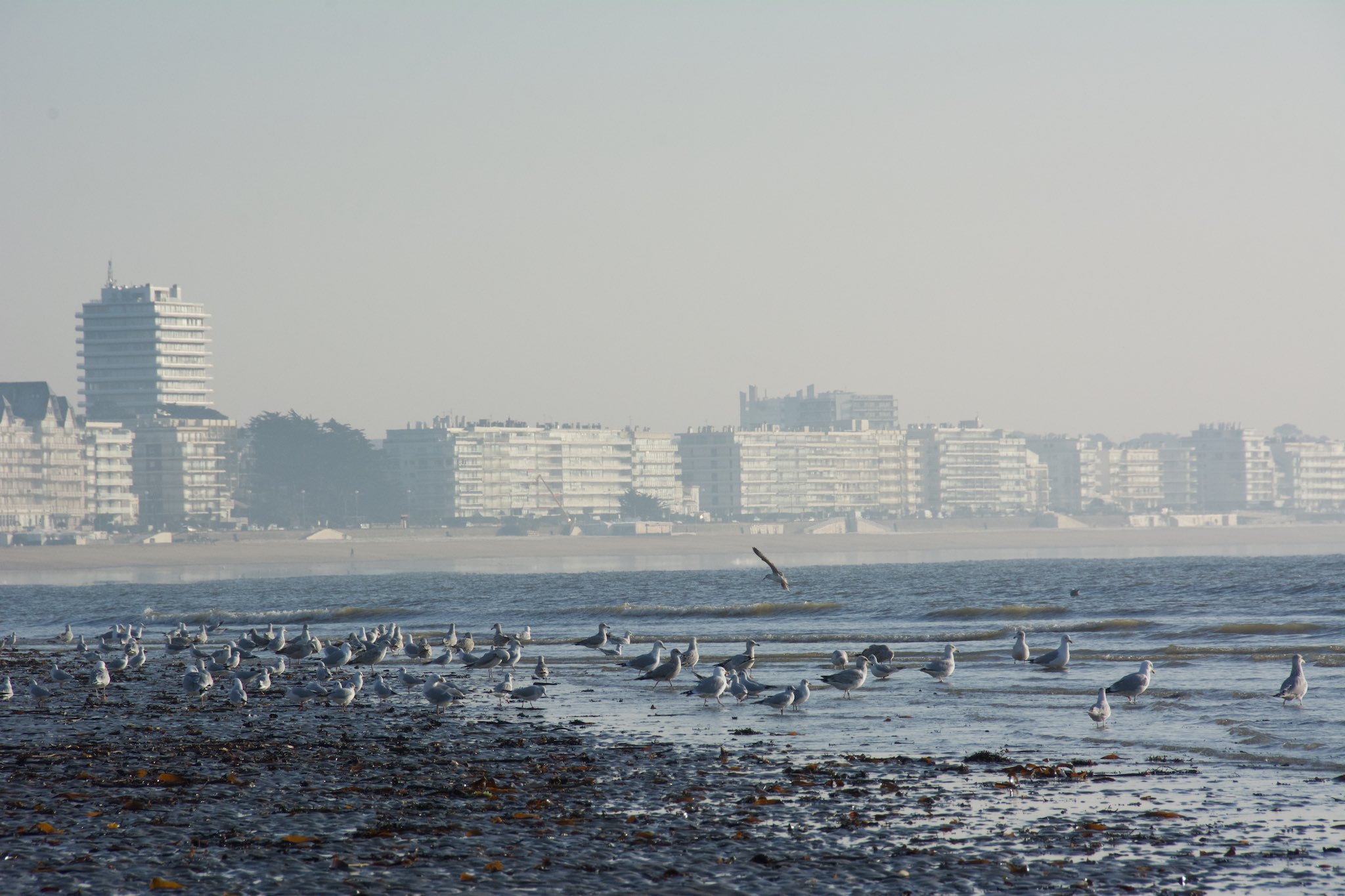
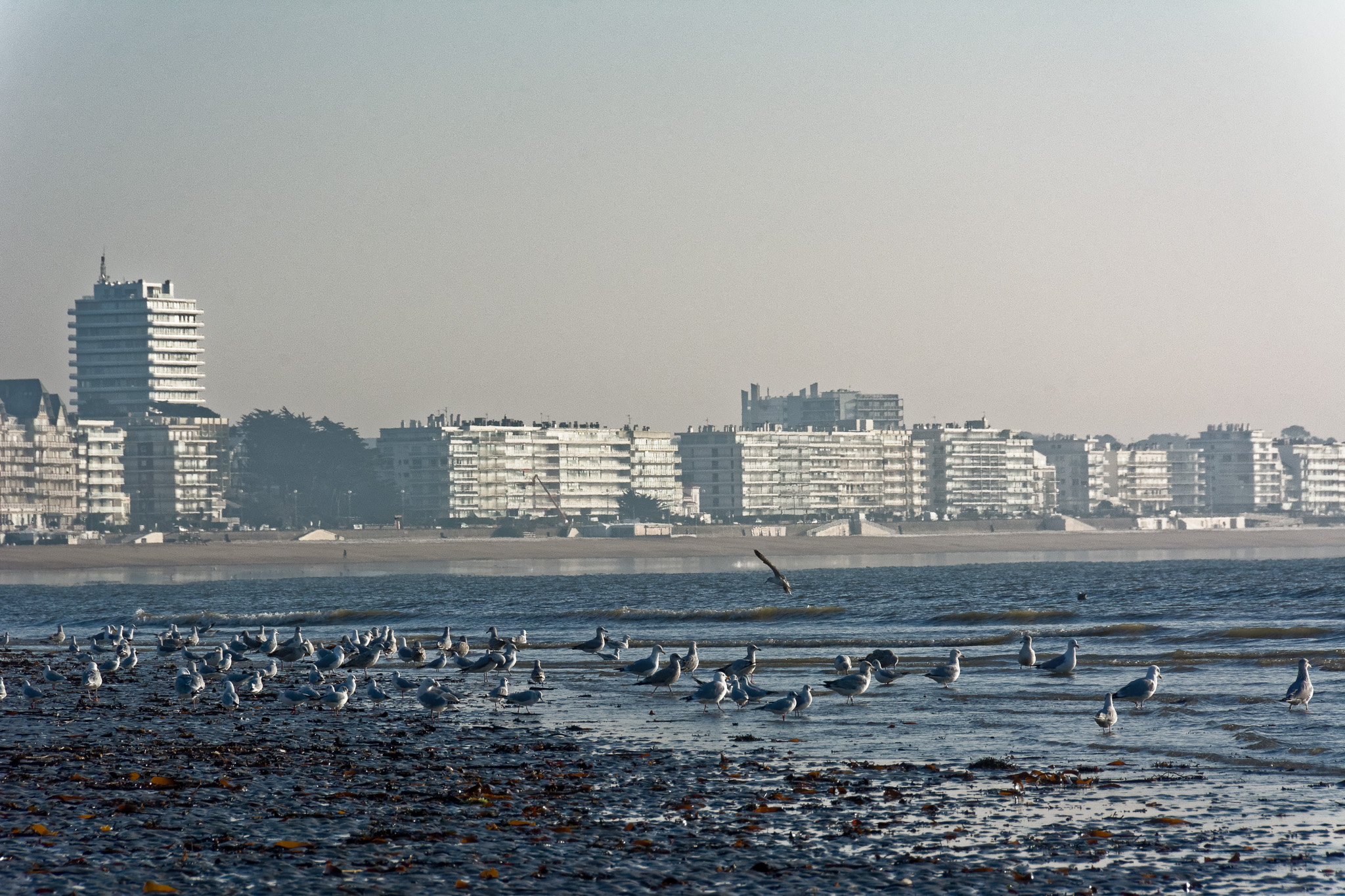
As an aside, DxO ClearView increased the contrast in the sky so much that I had to repair quite a few more sensor spots that were not noticeable in the other programs. Time to clean my sensor methinks!
I tried tweaking further the tools but didn’t achieve anything better and really felt the need for local adjustments, which DxO OpticsPro does not support. Despite owning the program for several years and upgrading regularly, I’m not really an expert in it as I do simple things with it, mostly lens correction and occasionally noise reduction, so perhaps a more regular user could find some additional improvements. On the other hand, simplicity is the DxO philosophy: it does the work automatically and aims to provide great raw conversion and impressive results from import.
Aperture 3.6
Back then to Aperture, where I tried manipulating the image manually with various contrast, definition, black point, exposure and other sliders. Frankly, I couldn’t find a working combination so in the end decided to click the Auto Enhance button, which moved more sliders than I had ever seen it do before. These included changes to all the Enhance sliders (Contrast, Definition, Saturation, Vibrancy), an RGB Curves adjustment, plus shadows (+29) and Mid-Contrast to 36. That combined with more contrast adjustment for a touch more de-hazing, a fairly hefty amount of additional shadow recovery (100), as the foreground had become decidedly inky. As a final adjustment I dodged the beach and sea with a Quick Brush (Softness 50, Strength 0.39) to lighten them up and add some presence to the foreground. Below is the result.

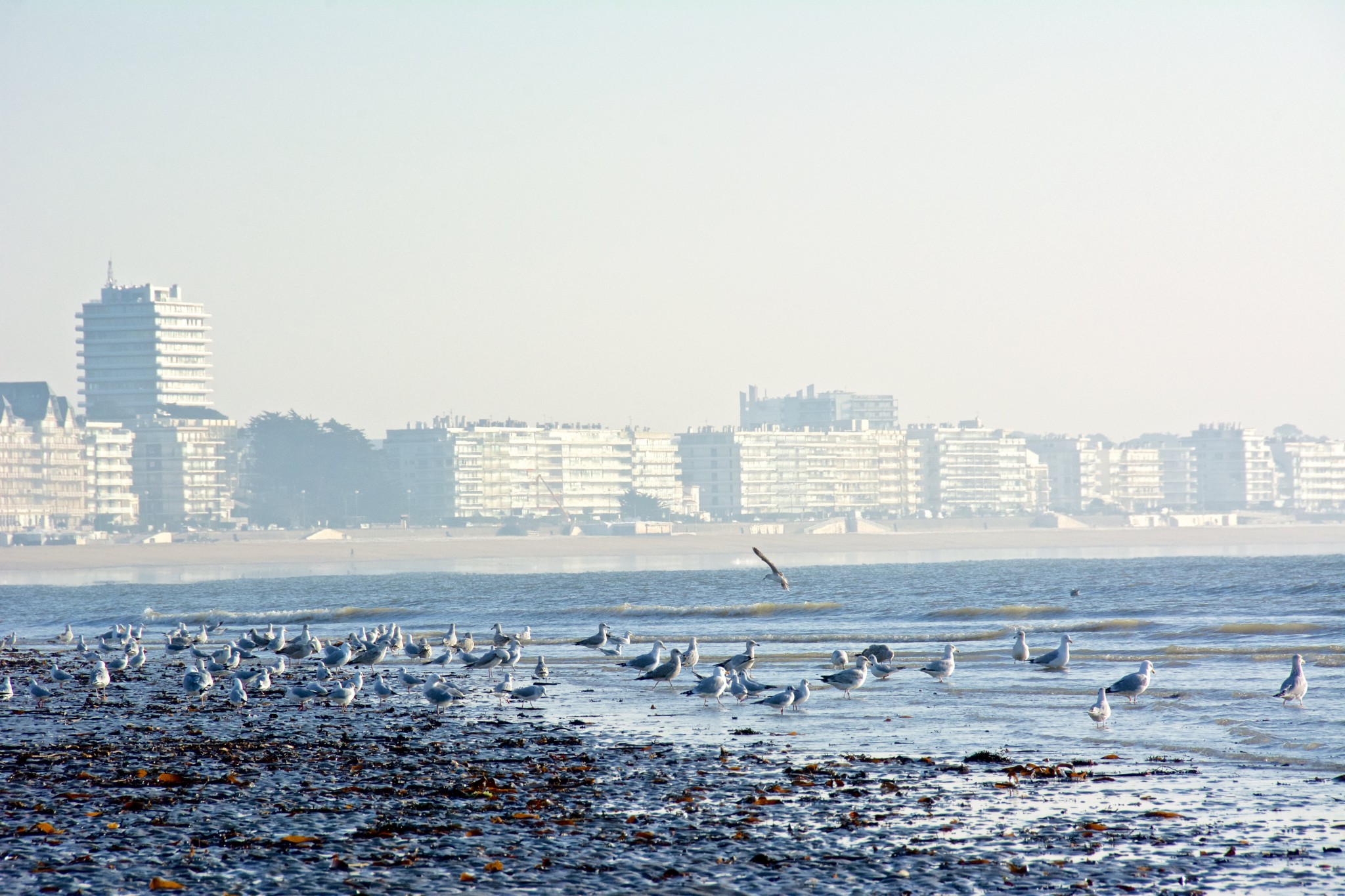
Adding lots of contrast in both Aperture and DxO Pro made the image foreground much darker. To my eyes, the image foreground in Aperture has a touch more detail and the sky is a little less murky but the haze in the background is still very much there. In sum, DxO OpticsPro 10 with DxO ClearView is a clear winner between the two programs for haze reduction but at the expense of a gritty sky and murkier beach. It also took multiple adjustments and quite a lot of experimentation to get Aperture to deliver the best result I was able to achieve.
Capture One Pro 8.2
Since the demise of Aperture last year, Capture One Pro has been my raw convertor and DAM of choice. It took a few minutes of experimentation but eventually I decided on the following strategy: add some sharpening to make the gulls stand out; on a separate layer, brush in a mask for the buildings and sky and push the clarity and structure sliders for the adjustment layer to their maximum; and add 0.24 addition of exposure compensation to the foreground compensate for the slightly dark foreground after import. My two final touches were to pull in the black point by 5 in the levels tool to tweak the beach colour and to dial back the saturation slider a bit. Below is the fully adjusted Capture One image:

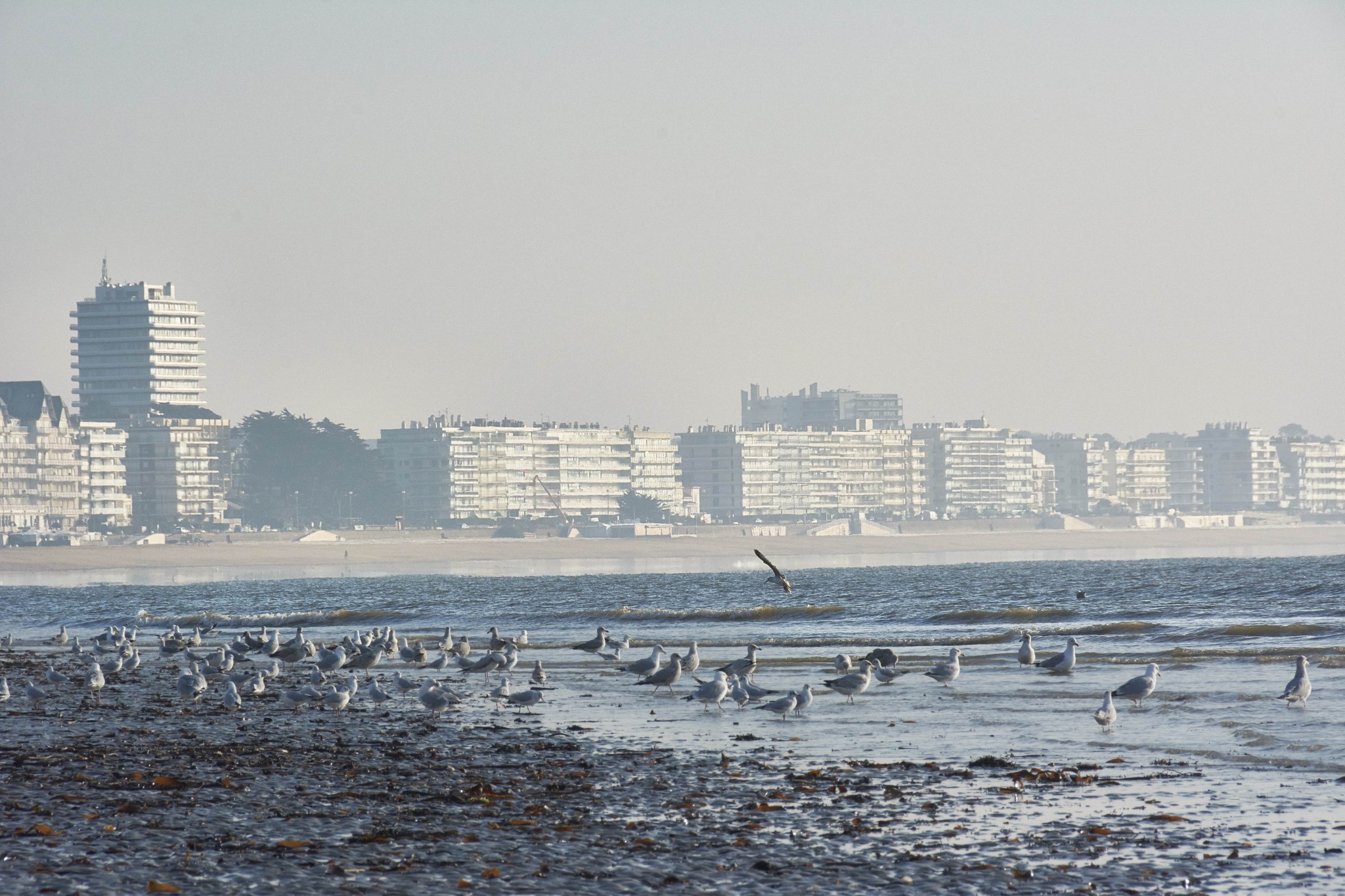
Overall, I’m quite pleased with the result and there is much less haze. Although DxO Pro did a better job in reducing the haze, both the beach and the sky are more pleasing to my eyes in the Capture One image though the sky is not as good as in the much less pushed Aperture. Once again, I had to work a lot harder to get my result in Capture One.
Lightroom 5.7
And so finally to Lightroom. This is the program I am least familiar with but I was hoping I could nevertheless do a reasonable job based on my knowledge of the other programs and what had worked and not worked in them for this particular image. Below is the direct import of the image with standard Lightroom adjustments:
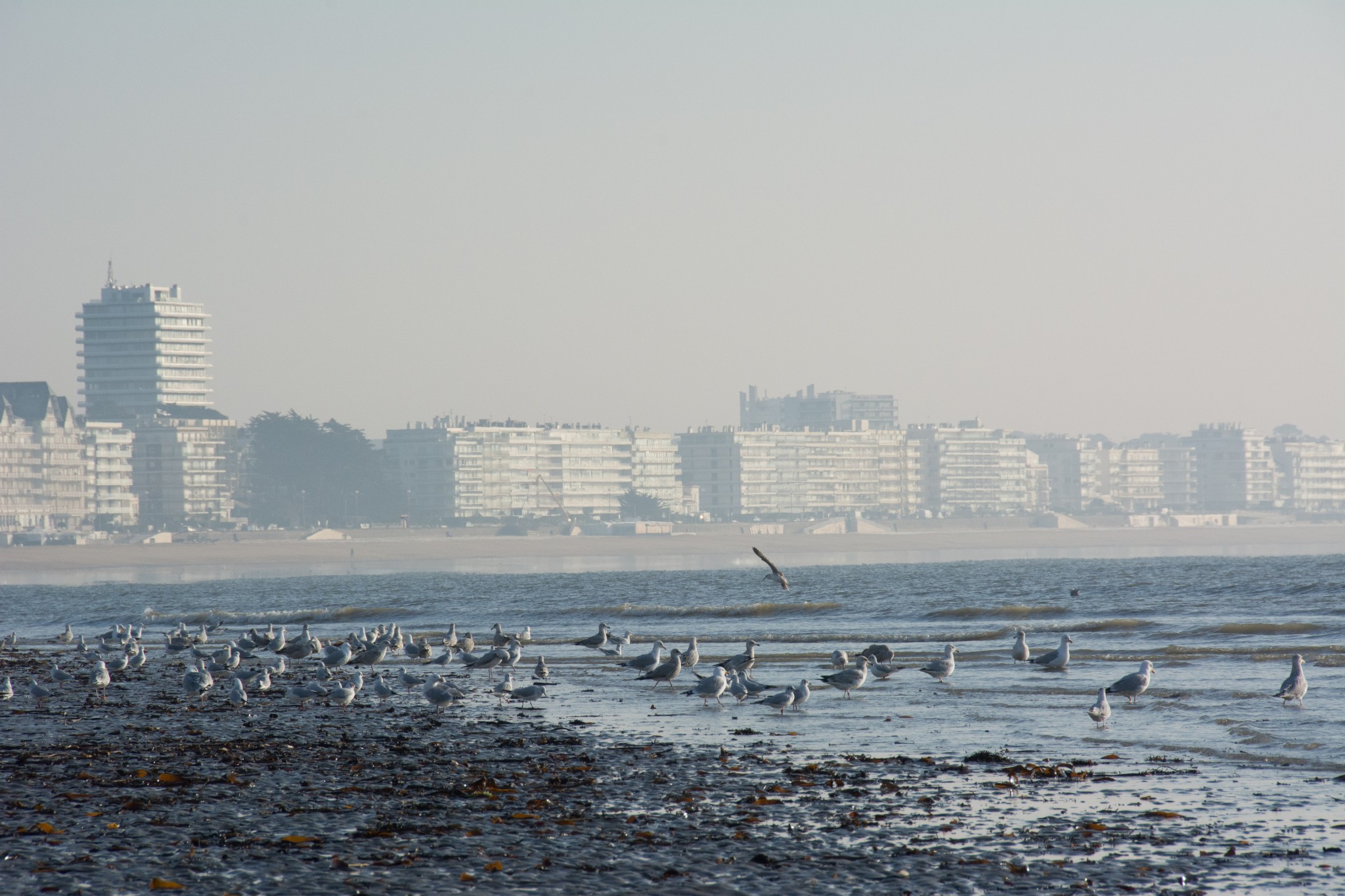 Lightroom import with standard adjustments
Lightroom import with standard adjustments
My first port of call was the clarity slider. This reduced the haze in the background a reasonable amount but here I ran into some trouble: the image became very de-saturated as a consequence. Same thing with the contrast slider, which as in the other programs also caused the beach to go inky. After a bit of Googling I found an article that suggested I use the vibrance slider to selectively add saturation back into the image, which got me back some of the blue in the sea and sky.
As with Aperture and Capture One I had to lift the shadows in the Tone Curve tool (+72) to adjust for a darkened beach and I also added a bit of sharpening. To complete the lightening of the foreground I brushed in some additional exposure correction with the Adjustment Brush. Take a look at my result below:

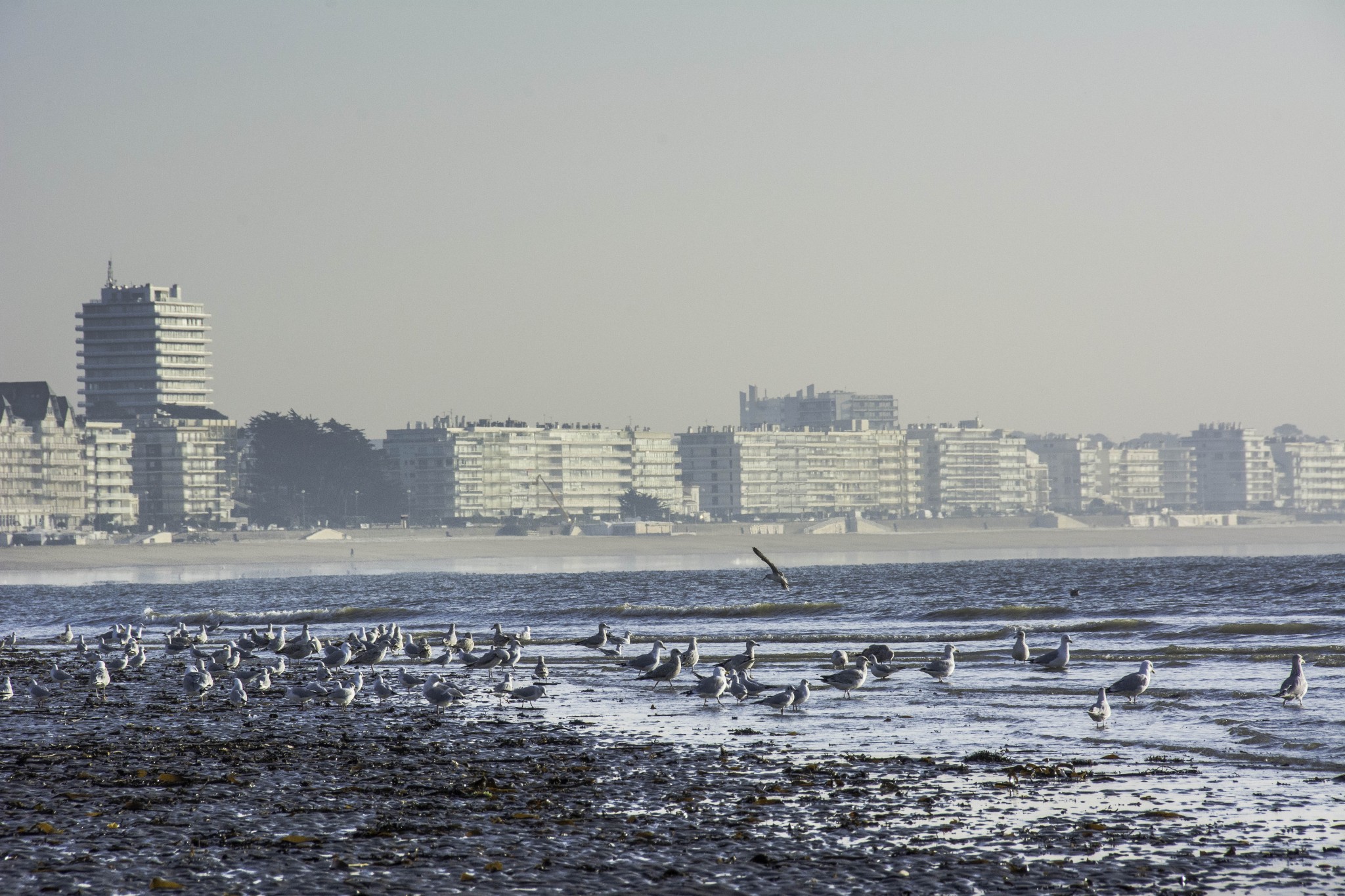
Conclusion
Reducing haze principally involves increasing contrast. In all my tests using the contrast slider alone was too brutal on the image so I resorted to the respective clarity sliders or definition slider in Aperture. DxO ClearView does this for you automatically and claims to perform some special magic by analyzing colour components and a local black.
Yet reducing haze via the contrast and/or clarity tools, automated or otherwise, comes at a cost and introduces unpleasant artifacts into the image, particularly in the darker or shadow areas (and in the sky in the case of DxO ClearView). To a greater or lesser extent, and depending on your knowledge of the program you use, you can mostly compensate for these artifacts.
Certainly DxO ClearView did the best job of reducing haze and did so automatically. What it did less well was compensate for the artifacts that result from aggressive contrast adjustments. In the other programs, I mostly managed to compensate for these though DxO Pro was hindered by the absence of local adjustments with a brush tool. [Editor's note: There actually is a “Dust” correction tool in DxO OpticsPro that is brushed in, however performance and results appear to be better in Lightroom, Aperture or Photoshop.]
Listing the programs by their anti-haze capabilities gives the following ranking: (1) DxO OpticsPro; (2) Capture One; (3) Lightroom; and (4) Aperture. Details were best in Capture One and DxO Pro, which confirms several other comparative tests I have done. The foreground beach came out best in my view in Aperture and Capture One; between the two it’s probably a matter of taste and how far you want to take the adjustments to get the results you prefer.
In many ways, despite the haze, I like the look of the Aperture image best as the sky and beach are the most natural. Capture One Pro in my view did the best job of combining haze reduction and leaving a relatively natural image though the sky suffered, and when I pushed Aperture I got horrible results. Despite my best efforts I couldn’t get any of the programs to deliver compelling haze reduction and leave a very pleasing image. On reflection rather than maximizing haze reduction I would have been better served by just going for the best look regardless of haze.
Want to try on the same image?
The author of this post has allowed us to post the original RAW file for you to download if you want to play with the same image. Get 'er here!
More like this
- Tip
- Tip
- Tip
- Tip
- Tip

Comments
on April 28, 2015 - 4:44pm
Thanks Pravin for this detailed comparison.
I've read recently that practically all RAW converters are based on dcraw and just expose it to different UIs. That would explain, why you often can get similar results from different RAW converters although with a different workflow due to differences in the UI.
For this task, DXO obviously has the best UI and thus the easiest workflow.
Could you give a link to the RAW, so we could play with it ourselves?
You know from our discussion about your C1 tip, that I have not settled on an Aperture replacement so far. The more I try different things, the more I come to the conclusion, that using a solid, flexible DAM as the central hub and a couple of RAW processors and image editors, depending on the image and task, is probably the way I'll go.
Your findings, that sometimes DXO does a better job than the highly praised C1 and even good old Aperture sometimes does better than C1 or Lightroom, encourages me to take that route.
on April 28, 2015 - 7:59pm
I highly doubt the dcraw story, to be honest. If that would be the case, why are they all incompatible to each other and can’t read each others settings? It’s because its proprietary source code. The reason why they are so close together is because of evolution and because there are just so many ways to interpret the data. Back in the days when all this RAW stuff started (around early 2000s) the differences between the converters were HUGE.
An user interface does not give you different results.
Also I would like to point out that this here was ONE picture with ONE particular problem (haze) edited by ONE user. It would be more than premature to conclude from this that they are all the same. I can show you actual results from my own comparisons which I did before settling on C1 which paint a completely different story.
on April 28, 2015 - 9:14pm
Hi Pete,
I'm also dubious about the dcraw story. Differences are quite significant between RAW convertors as MikeA observes.
I also have to agree with his statement about one picture, one problem, one user. In particular here, I didn't push Aperture anything like the extent I did the other programs (because excessive contrast adjustments in Aperture damaged the image too much) so I would hesitate to draw a conclusion about doing a better or worse job, except for haze.
My general observation based on literally hundreds of comparisons is that Capture One and DxO are for most cases superior RAW convertors to Aperture and Lightroom, though not for all situations. My suggestion would be to import 100 or more diverse photos into the target convertors you have in mind and do your own comparison. Not only will this allow you to form your own judgement but it will be one based on your own types of images. My real alternative to Capture One, which I eventually rejected for workflow reasons, was similar to your thoughts though: Lightroom for DAM and DxO as a front-end for RAW conversion, which was similar to what I did with Aperture, i.e. exporting to DxO for lens correction and noise reduction. It's laborious though though DxO+Lightroom should be easier.
BTW, I've asked Joseph if he can post a link to my RAW file. Hopefully it will be published later today.
Pravin Mirchandani
on April 29, 2015 - 5:02pm
You could as well just upload it to your Dropbox and post the shared link here.
on April 29, 2015 - 8:55pm
I know but Joseph prefers us to keep readers on site. I'll remind him again.
Pravin Mirchandani
on April 30, 2015 - 8:28pm
Sorry for the delay folks, the file is now available. It's in the story, or just click here.
@PhotoJoseph
— Have you signed up for the mailing list?
on April 28, 2015 - 8:12pm
I already had experience with the Neutralhazer plugin from Kolor (http://www.kolor.com/neutralhazer/) way before DxO implemented their ClearView option. I did a small test and found the Neutralhazer plugin of better and more natural results than ClearView.
on May 5, 2015 - 1:10pm
Hi Pravin,
Thanks for providing your picture. I processed it in Aperture and C1 and imo the latter beats Ap by miles. Not only does the overall picture look sharper, but the little glow the sun puts on the apartments makes it more lively.
I admit that the haze is less in the DxO-version, but it makes it like it starts to rain any minut, which I think was not at hand when the picture was taken.
Greetz, Martin
on May 6, 2015 - 11:01pm
Glad you found a way to make it work for you in C1. I agree that objectively the picture was better rendered in C1 but in the end I found the Aperture one quite atmospheric. When I edited in C1 I was trying just to minimise haze rather than optimise the scene and found that my mostly abandoned attempt on haze in Aperture led me to more or less the reverse and getting a pleasing image. If you found any tips to make the image better than my attempt do pass them on.
BTW, it became a beautiful day afterwards - no rain, just brilliant sunshine but by that time I was in conference.
Pravin Mirchandani
on May 25, 2015 - 8:12pm
I still owe you the settings of my version.
In the background layer the settings became: white balance 4884 and tint -0.2, exposure +0.05, contrast, +6 brightness -12, saturation -10, highlight +43
After that I made a few layers. The first one was for the beach and above with exposure set to +26, contrast -5 and saturation 13. Then there is a second layer for the water in which I changed the exposure to +0.46. Finally I made a layer for the sky where I played around with the color editor: smoother +12.9, hue +11.5, saturation +97.3 and lightness -12.2.
Greetz, Martin
on May 28, 2015 - 3:11pm
Look like Lightroom CC (6) will be having a haze removal tool coming soon: https://www.youtube.com/watch?v=HIJYL_AmqX0&feature=youtu.be Terry White has posted this video.
Stuart
Website: http://www.stuartonline.com
Google+: https://plus.google.com/+StuartSchaefer/
on June 14, 2015 - 9:28pm
nice thread, thanks.
I sometimes use built-in haze removal tool in KOLOR Autopano PRO, also available as separate utility. It uses a contrast mask (which features a setting slider only in the separate utiluity version) so it better addresses the picture areas of interest only. You can have a look at your picture beeing processed by this built-in tool, using default settings.
You can download the result here, but do it during few weeks to come only:
https://app.box.com/s/ckfb5dopx0ox4fq95fc4hvhg711kt9i2
on June 15, 2015 - 6:42am
Thanks - I took a look and the haze reduction is good - still get the inky effect in the foreground but that can be corrected.
Pravin Mirchandani
on June 15, 2015 - 8:01am
You are right. I only used default settinghs of the simpler version of this tool as integrated part of the Autopano. If I had used the separately purchaseable utility I could have masked the forground away in a very simple manner. In my eyes this could be the real benefit here - KOLOR haze removal is probably not any better than others, but offers a rather simple way for creating and using haze mask:
https://app.box.com/s/pk17m4hsuq3r19x77wb7bas20ddfugbi
on June 17, 2015 - 12:59pm
Hey Pravin!
Glad to see my Before|After comparison feature in here!
I wish it will server you well guys.
Keep up the good work!
on July 13, 2015 - 2:40am
Has anyone compared the DxO software to the Lightroom 6 CC dehaze?
Or the mod that some people came up with for Lightroom 6 standalone?
on July 13, 2015 - 6:36pm
I used a Lightroom 5 trial version for the original article, which has expired. Normally, I could get another trial for Lightroom 6 but of course as you have noted dehaze in Lightroom is CC only, so can't be tested in the standalone version.
Pravin
Pravin Mirchandani
on July 13, 2015 - 6:43pm
There is supposedly a workaround. Someone has posted a set of dehaze presets which can be used with the standalone LR 6.
http://www.dpreview.com/forums/thread/3863397
on July 13, 2015 - 6:54pm
Thanks for the tip on the standalone presets. I won't do the comparison yet as I want to wait for my next major tip where I use Lightroom as a comparison before using up my next trial option. If you are prepared to try yourself (or anyone else for that matter), take a look at my settings and those of Martin De above as this might help to guide any supplementary corrections with Lightroom's haze tool if required. The original RAW image is also available at the link of the bottom of the article if you want to try for a direct comparison. Report back if you do as it helps others.
Pravin Mirchandani
on July 13, 2015 - 7:16pm
I will see if I can try it.
Main library is still on Aperture – and am trying to avoid migrating to LR as long as possible because I don’t like the UI.
But some of the results I’ve seen look pretty impressive, such as this thread:
http://www.dpreview.com/forums/thread/3864416